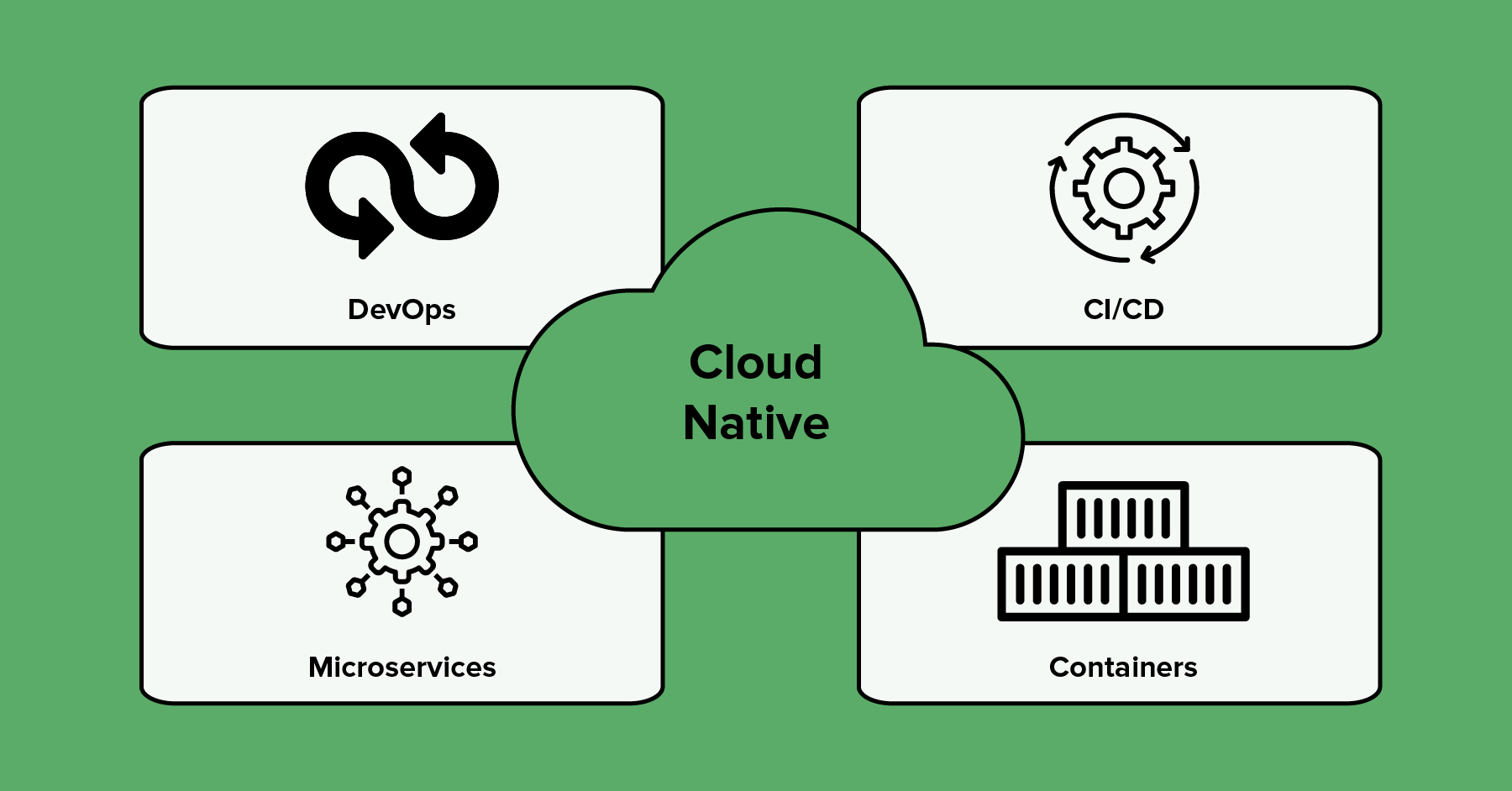Cloud-Native DevOps is a set of ideas that describe how people work together to build, install, and run applications in a cloud-native environment. Containers, microservices, and Kubernetes have transformed how people work. As a result, cloud-native DevOps should indeed be considered as a technique that broadens the ongoing requirements for development and IT teams to build procedures to fulfill an organization’s essential business goals.
Adopting cloud-native technology was previously optional. However, in order to be inventive, responsive, and competitive, enterprises must now create applications faster and deploy them on a robust IT infrastructure. Cloud computing is now an established technology that provides a wide variety of expanded capabilities that were before unthinkable.
For enterprises to fully exploit the cloud and adopt a cloud-native strategy, DevOps is critical. Companies are using cloud-native technology to expedite innovation, accelerate go-to-market processes, and restructure. DevOps improves organizational collaboration by aligning people, processes, and technology to increase speed and efficiency. It benefits an organization by ensuring that all personnel engaged in app development work together effortlessly.

Cloud-native app development is a method that fully utilizes cloud computing and is built on service-oriented architectures such as microservices, API-based communication, container infrastructure, and DevOps.
Changes in company culture, methods, and technology are required to implement cloud-native DevOps. A best practices-driven strategy will not only help you expedite your implementation process, but it will also help you identify and solve difficulties and risks.
Here are the recommended practices for implementing Cloud-Native DevOps.
Adopting a cloud-native mindset.
Cloud-native DevOps is more than just using new technologies or a platform. It is a cultural and mental transformation. A service-oriented perspective is required for cloud-native. To take advantage of new technology, quicker processes, and increased collaboration, your business must genuinely adopt DevOps concepts and cultivate a DevOps mentality. So, start by altering your organization’s thinking and reorganizing your teams around talents.
Recognizing the technologies at work.
Open-source technologies are mostly used in cloud-native DevOps. As a result, understanding how these technologies function and how to manage them is critical. Adopting new technology always carries some risk because it might have an influence on an organization’s stability. As a result, do a risk assessment and determine the adjustments necessary to implement cloud-native technology.
Empowering your staff.
Begin by assessing the existing skillsets available inside the firm and determining the assistance the cloud-native DevOps team may require. To remedy any gaps in employee capabilities, you must do an analysis of their abilities. Also, assess your teams’ needs and provide them with the necessary tools and training.
Evaluating the organization’s resources.
Developers may use cloud-native technologies to easily create and launch highly reliable and scalable services. However, methods and a work culture are required to allow rapid deployment and a dynamic environment. So, learn about your company’s present procedures, as well as their potential for speedier deployment and dynamic workflows.
IT automation.
This is critical for shortening the delivery cycle and eliminating manual labor. Provisioning of networks and infrastructure, as well as application deployment and setup, can all be automated. It may be expanded to include containers, cloud computing, security, and testing, among other things.
Conclusion.
A firm may benefit greatly from a cloud-native DevOps culture. It is changing the way apps are developed and managed. They provide an efficient means for businesses to use the cloud to build scalable and dependable services. The first step is to implement cloud-native DevOps. It may appear to be a resource and capital-heavy, yet it may provide considerable benefits to businesses.
Effective cloud-native DevOps deployment allows firms to bring new technologies to market more quickly, accelerating their digital transformation. The cloud-native strategy has been a boon to software organizations by lowering massive cloud expenses while increasing efficiency and performance. Relying entirely on the promise of cloud-native DevOps enables on-demand, limitless software development capabilities.
Both the cloud-native and DevOps trends are growing in popularity. According to reports and data, the worldwide DevOps industry will increase from $4.49 billion in 2019 to $17.27 billion in 2027.
Furthermore, the COVID-19 pandemic had a big impact on cloud usage. According to predictions, by the end of 2021, 80 percent of businesses will have doubled their use of cloud-centric infrastructure and apps. This is mostly due to the transition to a remote-first workforce.
Continuous deployment and a cloud-native DevOps methodology increase agility. Furthermore, it scales up systems and applications without requiring major adjustments.
Leave a Reply